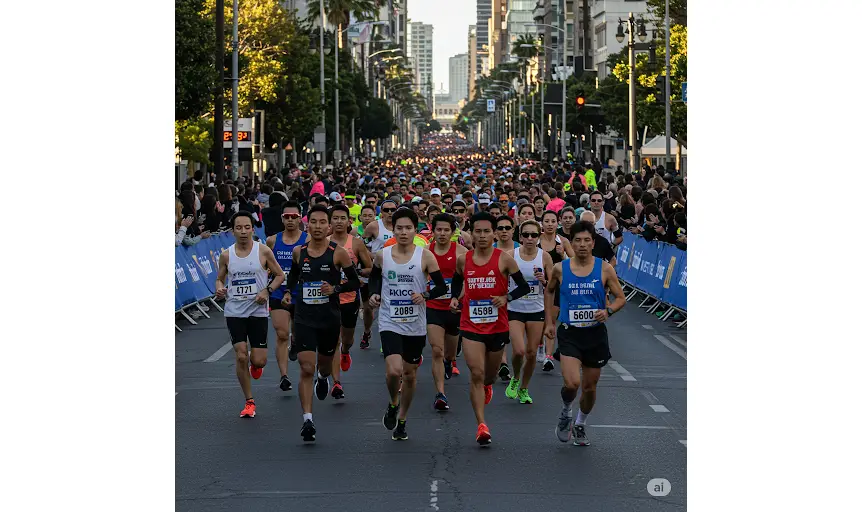
The Marathon: A Journey Through Time and Endurance
The sport has captivated hearts and minds for centuries. From its ancient roots to its modern-day prominence, Marathon embodies human resilience and determination. This legendary race transcends geographical, cultural, and social barriers, uniting people worldwide. Today, it’s celebrated as a test of physical endurance and mental fortitude. In this post, we will delve into the origins, global reach, amateur involvement, professional leagues, and societal significance of this remarkable sport.
Origins and History of the Marathon
It traces its origins to ancient Greece. According to legend, in 490 BCE, a Greek messenger named Pheidippides ran from the battlefield of Marathon to Athens. He delivered the news of a Greek victory over the Persians before collapsing and dying from exhaustion. This act of heroism inspired the creation of the Marathon as a sporting event.
When the modern Olympic Games were revived in 1896, the organizers sought an event that would honor ancient Greek heritage. The first official race was held during the Athens Olympics that year. Athletes ran a distance of 40 kilometers, roughly the distance from Marathon to Athens. Over time, the race’s length was standardized to 42.195 kilometers (26.2 miles) at the 1908 London Olympics.
The Global Popularity of the Marathon
Marathon running has grown into a global phenomenon. Each year, millions of runners participate in races across continents. From elite athletes to first-time participants, individuals of all backgrounds embrace this challenging sport.
Some of the world’s most iconic marathons include the Boston Marathon, the New York City Marathon, and the London Marathon. These events attract participants from every corner of the globe. The appeal of these races lies in their unique courses, enthusiastic spectators, and rich traditions.
In developing countries, marathons have become an important platform for showcasing local talent. Nations like Kenya and Ethiopia have produced some of the fastest marathon runners in history. Their dominance in the sport has inspired a new generation of athletes.
Amateur Marathon Running
Amateur runners form the backbone of the Marathon community. For many, completing a marathon represents a personal achievement. Training programs tailored to beginners help individuals gradually build endurance and confidence.
Youth participation in marathons has seen significant growth. Schools and community organizations host events like mini-marathons to encourage physical fitness. These initiatives instill a love for running at an early age, fostering a lifelong appreciation for the sport.
Charity runs and fundraising events often incorporate marathons to bring communities together. Participants not only challenge themselves but also contribute to meaningful causes. The inclusive nature of these events allows people of all abilities to join.
Professional Marathon Leagues
The professional Marathon scene is as vibrant as its amateur counterpart. Major international events form the core of professional running. These include the World Marathon Majors, a series comprising six prestigious races: Tokyo, Boston, London, Berlin, Chicago, and New York City.
Professional athletes compete for substantial prize money and global recognition. Beyond the World Marathon Majors, regional and national marathons also showcase elite talent. Cities like Dubai, Amsterdam, and Honolulu host notable events that draw top-tier runners.
Endorsements and sponsorships play a significant role in professional marathons. Athletes represent global brands, elevating the sport’s visibility. These partnerships also support training programs and promote diversity within the running community.
Social and Political Significance of Marathons
Marathons hold profound social and political importance. Historically, they’ve served as platforms for promoting unity and resilience. For instance, the Boston Marathon became a symbol of strength and solidarity following the 2013 bombing.
In many nations, marathons spotlight social issues and encourage dialogue. Events like the Peace Marathon in Rwanda highlight themes of reconciliation and healing. Similarly, marathons advocating for environmental conservation draw attention to climate change.
Politicians and public figures often participate in marathons to connect with constituents. These appearances emphasize health and fitness while demonstrating solidarity with local communities. Additionally, marathons promote gender equality by celebrating achievements of female runners, such as Kathrine Switzer’s historic Boston Marathon run in 1967.
Rules of the Marathon
Understanding the rules is essential for participants and organizers. The race covers a distance of 42.195 kilometers, measured precisely to ensure fairness. Timing systems record each runner’s start and finish time accurately.
Runners must follow designated routes marked by organizers. Straying from the course can lead to disqualification. Aid stations placed along the route provide water and medical support to participants.
Fair play is crucial in marathons. Participants must not use performance-enhancing drugs or receive unauthorized assistance. Professional athletes undergo rigorous testing to uphold the integrity of the sport.
Cut-off times ensure races run smoothly and safely. Participants unable to complete the course within the specified time are required to exit the race. These rules maintain order and allow event organizers to manage logistics effectively.
Conclusion
The Marathon is more than just a race; it’s a celebration of human potential. Its rich history, global reach, and profound impact on society make it a truly unique sport. Whether through amateur participation or professional competition, marathons inspire individuals to push their limits. They unite communities and elevate conversations about health, equality, and resilience. By understanding its origins, significance, and rules, one can fully appreciate the enduring legacy of the Marathon.




